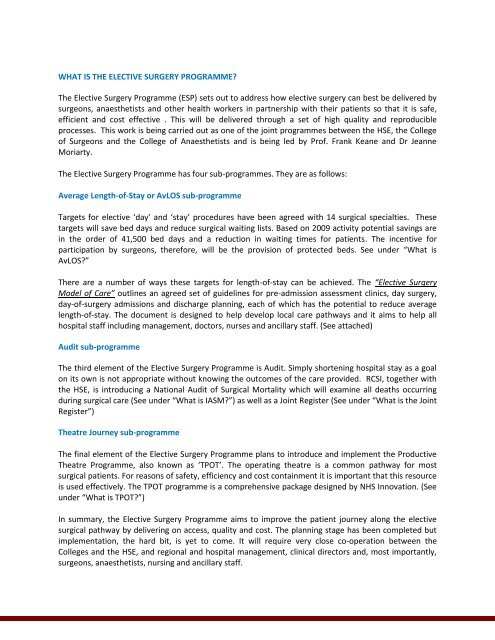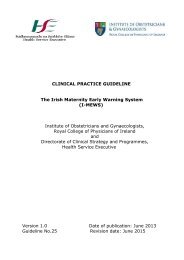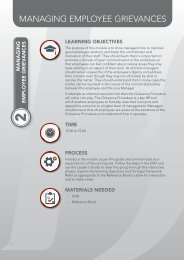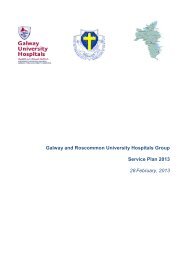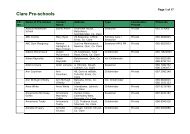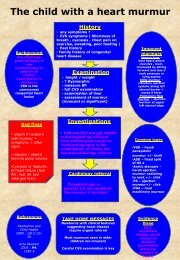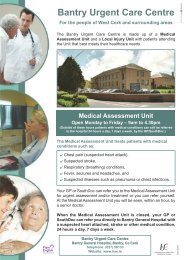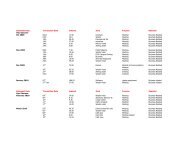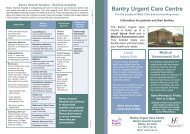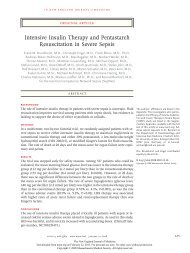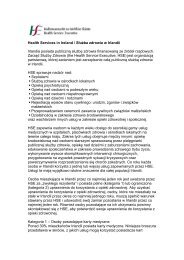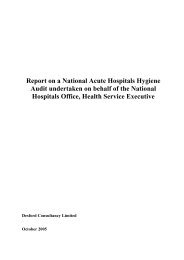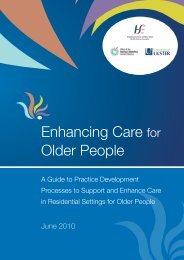Elective Surgery Programme Implementation Support Guide
Elective Surgery Programme Implementation Support Guide
Elective Surgery Programme Implementation Support Guide
You also want an ePaper? Increase the reach of your titles
YUMPU automatically turns print PDFs into web optimized ePapers that Google loves.
WHAT IS THE ELECTIVE SURGERY PROGRAMME?<br />
The <strong>Elective</strong> <strong>Surgery</strong> <strong>Programme</strong> (ESP) sets out to address how elective surgery can best be delivered by<br />
surgeons, anaesthetists and other health workers in partnership with their patients so that it is safe,<br />
efficient and cost effective . This will be delivered through a set of high quality and reproducible<br />
processes. This work is being carried out as one of the joint programmes between the HSE, the College<br />
of Surgeons and the College of Anaesthetists and is being led by Prof. Frank Keane and Dr Jeanne<br />
Moriarty.<br />
The <strong>Elective</strong> <strong>Surgery</strong> <strong>Programme</strong> has four sub-programmes. They are as follows:<br />
Average Length-of-Stay or AvLOS sub-programme<br />
Targets for elective ‘day’ and ‘stay’ procedures have been agreed with 14 surgical specialties. These<br />
targets will save bed days and reduce surgical waiting lists. Based on 2009 activity potential savings are<br />
in the order of 41,500 bed days and a reduction in waiting times for patients. The incentive for<br />
participation by surgeons, therefore, will be the provision of protected beds. See under “What is<br />
AvLOS?”<br />
There are a number of ways these targets for length-of-stay can be achieved. The “<strong>Elective</strong> <strong>Surgery</strong><br />
Model of Care” outlines an agreed set of guidelines for pre-admission assessment clinics, day surgery,<br />
day-of-surgery admissions and discharge planning, each of which has the potential to reduce average<br />
length-of-stay. The document is designed to help develop local care pathways and it aims to help all<br />
hospital staff including management, doctors, nurses and ancillary staff. (See attached)<br />
Audit sub-programme<br />
The third element of the <strong>Elective</strong> <strong>Surgery</strong> <strong>Programme</strong> is Audit. Simply shortening hospital stay as a goal<br />
on its own is not appropriate without knowing the outcomes of the care provided. RCSI, together with<br />
the HSE, is introducing a National Audit of Surgical Mortality which will examine all deaths occurring<br />
during surgical care (See under “What is IASM?”) as well as a Joint Register (See under “What is the Joint<br />
Register”)<br />
Theatre Journey sub-programme<br />
The final element of the <strong>Elective</strong> <strong>Surgery</strong> <strong>Programme</strong> plans to introduce and implement the Productive<br />
Theatre <strong>Programme</strong>, also known as ‘TPOT’. The operating theatre is a common pathway for most<br />
surgical patients. For reasons of safety, efficiency and cost containment it is important that this resource<br />
is used effectively. The TPOT programme is a comprehensive package designed by NHS Innovation. (See<br />
under “What is TPOT?”)<br />
In summary, the <strong>Elective</strong> <strong>Surgery</strong> <strong>Programme</strong> aims to improve the patient journey along the elective<br />
surgical pathway by delivering on access, quality and cost. The planning stage has been completed but<br />
implementation, the hard bit, is yet to come. It will require very close co-operation between the<br />
Colleges and the HSE, and regional and hospital management, clinical directors and, most importantly,<br />
surgeons, anaesthetists, nursing and ancillary staff.


